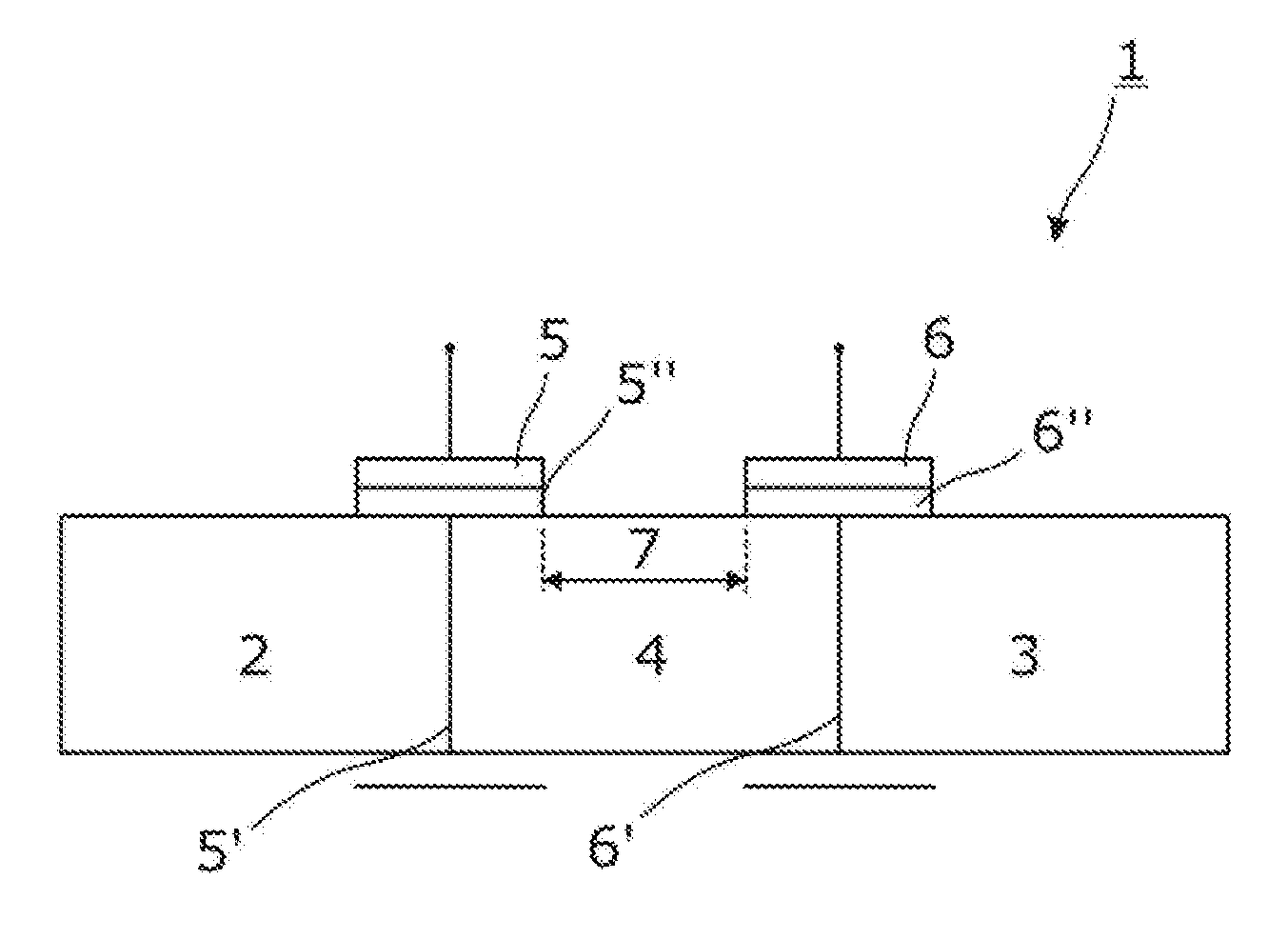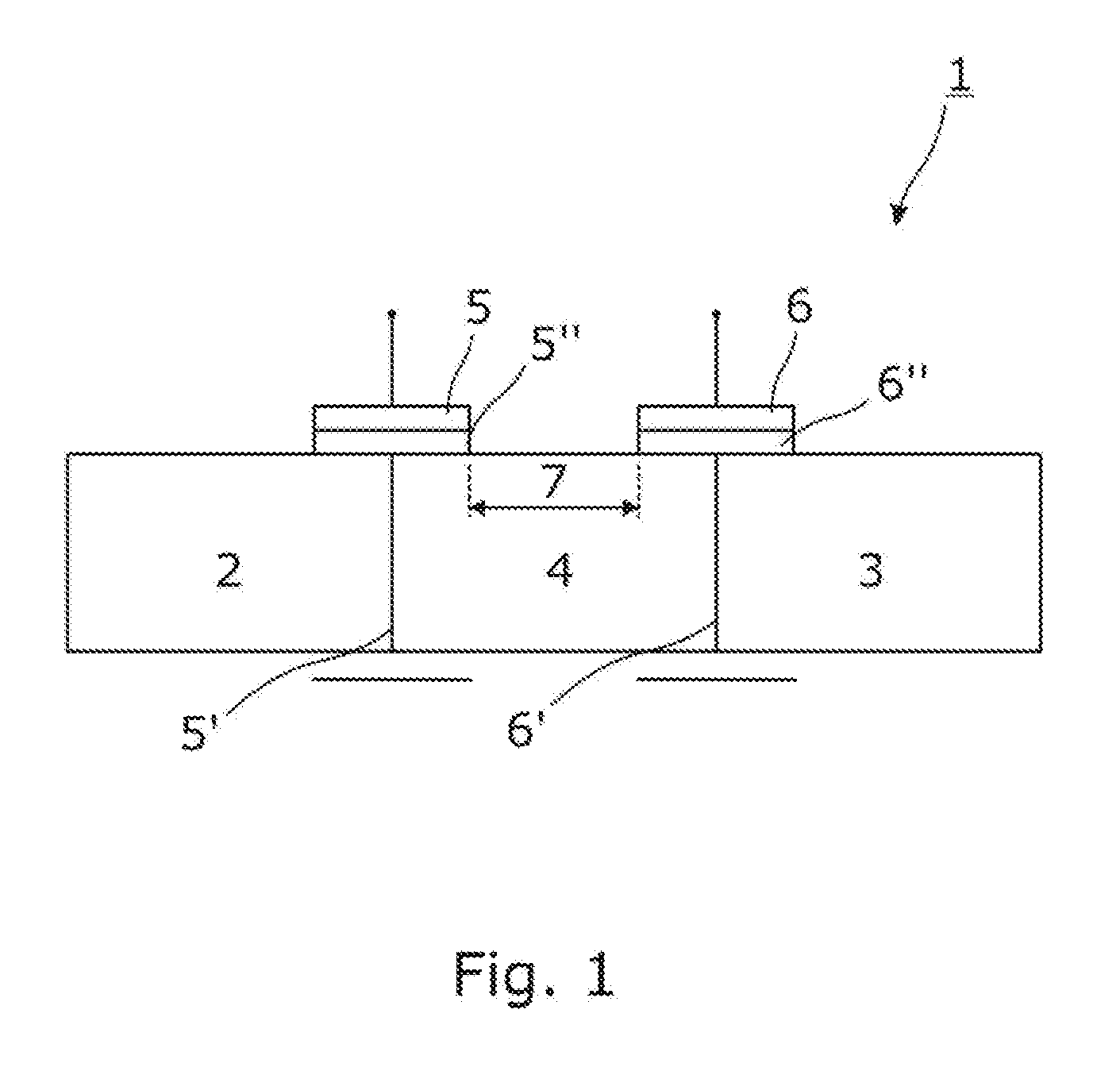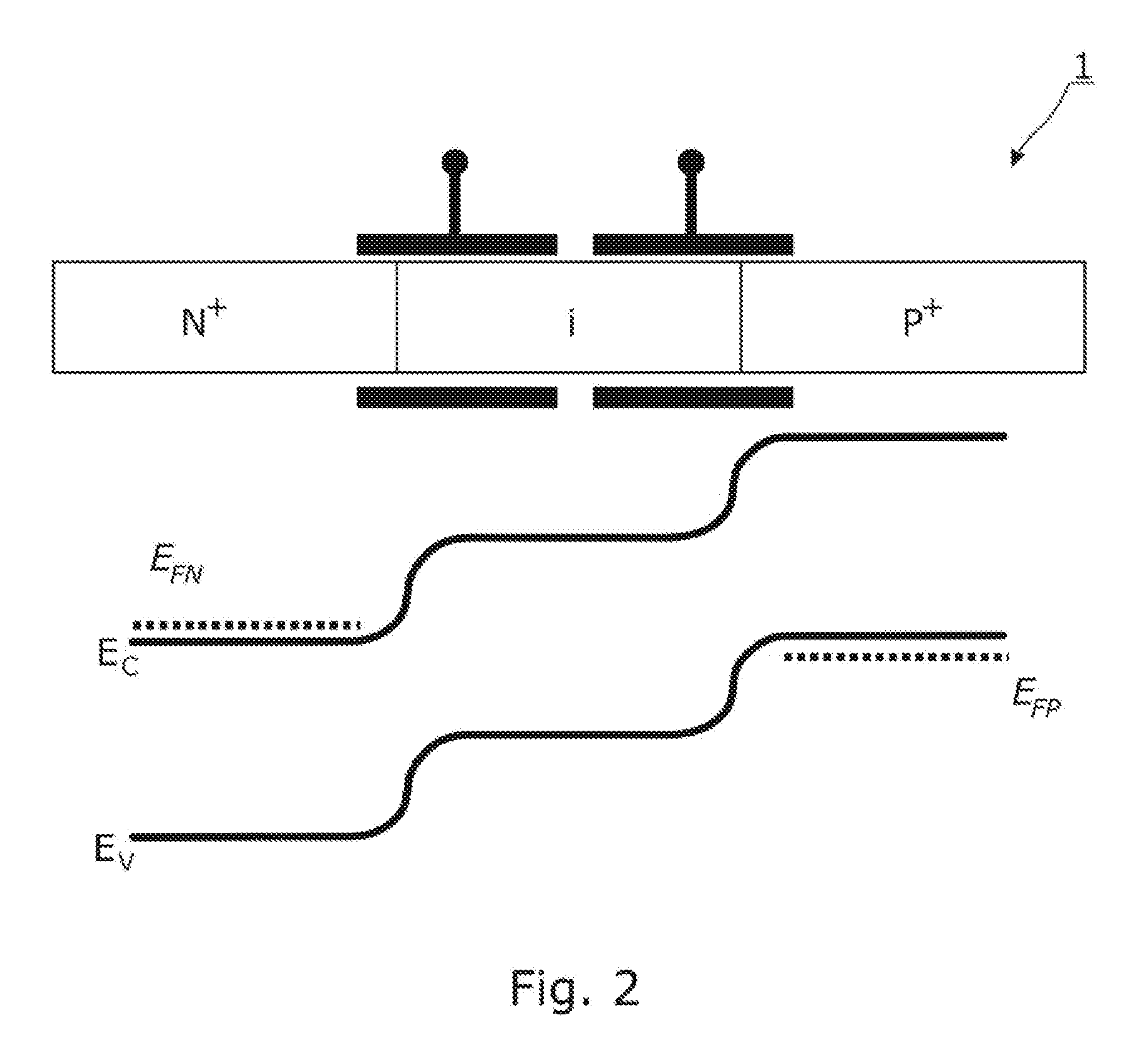Tunnel field-effect transistor
a field-effect transistor and tunnel-type technology, applied in the direction of instruments, computation using denominational number representation, pulse technique, etc., can solve the problem of limited device-scaling in the sub-65 nm regim
- Summary
- Abstract
- Description
- Claims
- Application Information
AI Technical Summary
Benefits of technology
Problems solved by technology
Method used
Image
Examples
Embodiment Construction
[0024]Within the description, the same reference numerals or signs have been used to denote the same parts or the like.
[0025]Reference is now made to FIG. 1, which schematically illustrates an embodiment according to a device aspect of the present invention.
[0026]As can be seen from FIG. 1, an embodiment of the present invention includes a TFET 1 that includes: a source region 2 including a corresponding source semiconductor material; a drain region 3 including a corresponding drain semiconductor material, and a channel region 4 including a corresponding channel semiconductor material, which is provided between the source region 2 and the drain region 3. The source semiconductor material and the drain semiconductor material are doped with carriers such that the polarity of the carriers of the source semiconductor material is different from that of the carriers with which the drain semiconductor material is doped. So, if the source semiconductor material is n-type doped, then the dra...
PUM
 Login to View More
Login to View More Abstract
Description
Claims
Application Information
 Login to View More
Login to View More - R&D
- Intellectual Property
- Life Sciences
- Materials
- Tech Scout
- Unparalleled Data Quality
- Higher Quality Content
- 60% Fewer Hallucinations
Browse by: Latest US Patents, China's latest patents, Technical Efficacy Thesaurus, Application Domain, Technology Topic, Popular Technical Reports.
© 2025 PatSnap. All rights reserved.Legal|Privacy policy|Modern Slavery Act Transparency Statement|Sitemap|About US| Contact US: help@patsnap.com



